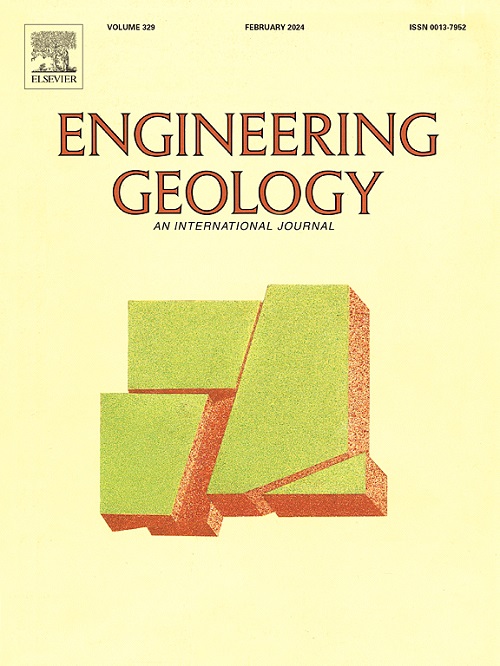Investigation on capturing bedding planes in laminated shale through advanced physics-informed image processing for multiscale geomechanical simulation
IF 6.9
1区 工程技术
Q1 ENGINEERING, GEOLOGICAL
引用次数: 0
Abstract
Shale is characterized by its laminated and fissile nature, consisting of numerous thin layers that easily split along bedding planes. Traditional geomechanical simulations often simplify shale's complex structure by representing bedding planes as continuous and equidistant. While this approach is numerically efficient and useful for approximating general shale behavior, it limits our understanding of the shale's true mechanical response to mining-induced stress. This study proposes an advanced physics-informed image processing method to capture bedding planes across different orientations, scales, and shale types. The method includes five procedures: 1) projection transfer, where a 3D cylinder is projected onto a 2D image; 2) edge detection, where physics-informed edges are detected to obtain bedding plane pixels; 3) clustering, where bedding plane pixels are clustered to form bedding plane lines; 4) representation of bedding planes; and 5) feature extraction of bedding planes. Our method effectively captures bedding planes across different orientations (0°, 45°, and 90°), scales (interim bedding planes at the laboratory scale and ordinary bedding planes at the rock mass scale), and shale types (Opalinus shale, sandy shale, gray shale, black shale, and carbonaceous shale). The geometric information extracted from the bedding planes—including coordinates, number, spacing, length, and distribution characteristics—has been summarized into a comprehensive database for different shales at different scales. The results show that: at the laboratory scale, the captured interim bedding planes are neither continuous nor equidistant. Their lengths follow a log-normal distribution, with the mean length (LN) ranging from 1.227 to 1.823 and the standard deviation (LN) varying between 1.069 and 5.062. The fitting statistical parameters, including the mean and standard deviation of this distribution, have been summarized. At the rock mass scale, the ordinary bedding planes are continuous but not equidistant. Successful multiscale geomechanical simulations in UDEC and FLAC3D were conducted to model uniaxial compression tests at the laboratory scale and shale roof failure at the entry scale, calibrated using laboratory and field observations.
求助全文
约1分钟内获得全文
求助全文
来源期刊

Engineering Geology
地学-地球科学综合
CiteScore
13.70
自引率
12.20%
发文量
327
审稿时长
5.6 months
期刊介绍:
Engineering Geology, an international interdisciplinary journal, serves as a bridge between earth sciences and engineering, focusing on geological and geotechnical engineering. It welcomes studies with relevance to engineering, environmental concerns, and safety, catering to engineering geologists with backgrounds in geology or civil/mining engineering. Topics include applied geomorphology, structural geology, geophysics, geochemistry, environmental geology, hydrogeology, land use planning, natural hazards, remote sensing, soil and rock mechanics, and applied geotechnical engineering. The journal provides a platform for research at the intersection of geology and engineering disciplines.
 求助内容:
求助内容: 应助结果提醒方式:
应助结果提醒方式:


